6 Lighting Tips for Interior Design in Modern Homes in Singapore
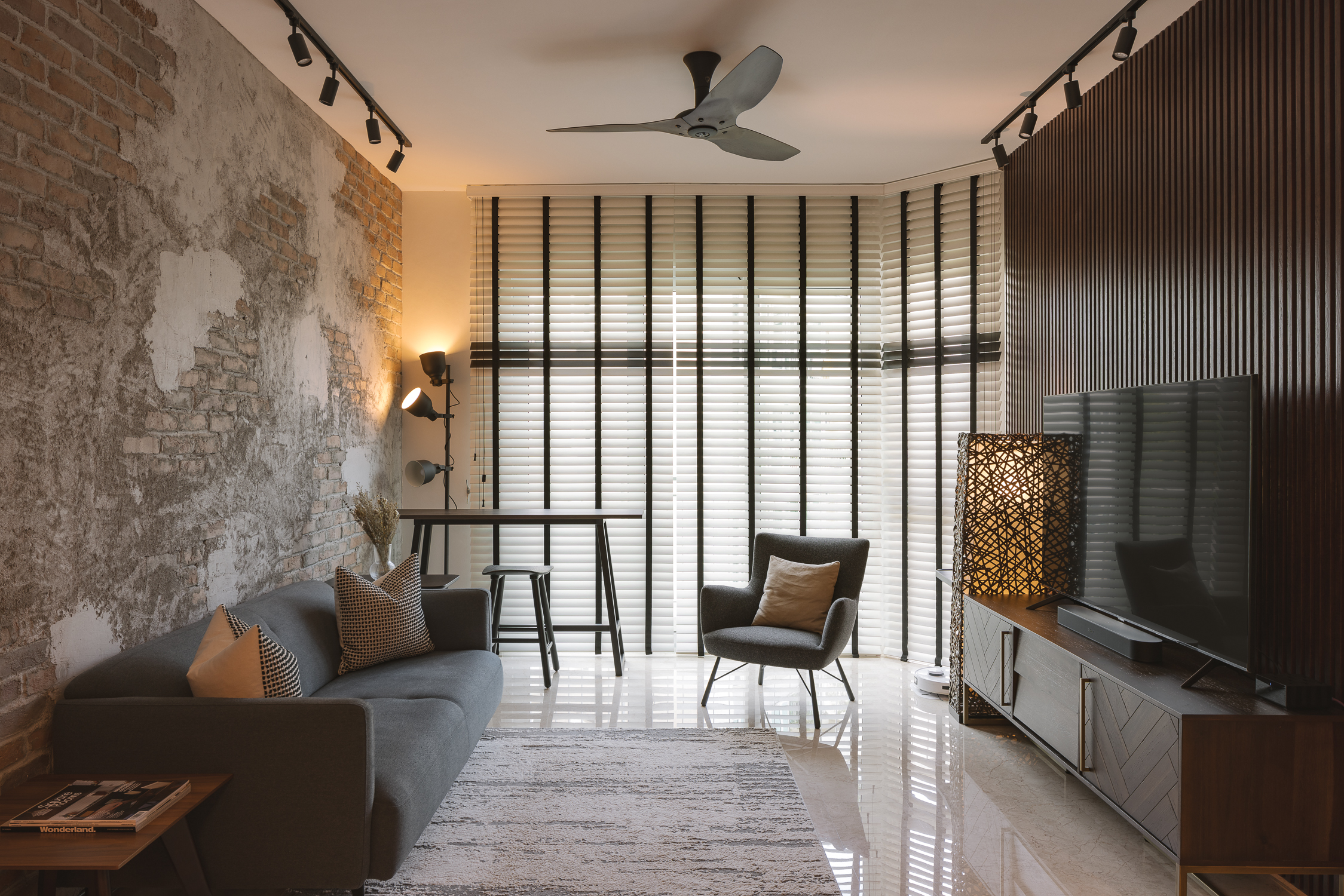
Lighting plays a crucial role in the interior design of modern houses, influencing mood, aesthetics, and overall functionality. In Singapore homes, from HDB flats to condominiums and landed houses, strategic lighting can maximise space, highlight design features, and enhance comfort. In this article, we’ll share six essential lighting design tips for modern houses’ interior design in Singapore. You will learn practical strategies to maximise natural light, select the right fixtures, improve energy efficiency, and create a stylish, well-lit home that balances form and function.
Key Takeaways
- Lighting is a fundamental component of modern houses’ interior design, shaping both the aesthetics and functionality of a home. It influences mood, highlights architectural and decorative features, and contributes to overall comfort and well-being. In Singapore homes, where space is often limited, strategically planned lighting can enhance the perception of openness, create depth, and effectively emphasise design elements.
- Maximising natural light is one of the most essential strategies in modern interior design. Natural sunlight not only brightens interiors and makes spaces feel larger but also has a positive effect on mood and well-being. Using large windows, skylights, and strategically positioned openings helps homeowners bring daylight into every room, while reflective surfaces, light-coloured finishes, and thoughtful furniture placement amplify its effect. Managing the tropical sun in Singapore with curtains, blinds, or external shading ensures that natural light remains comfortable and energy-efficient throughout the day.
- Layered lighting is essential for creating depth, versatility, and elegance in modern interiors. Combining ambient lighting for overall illumination, task lighting for functional areas, and accent lighting to highlight key design elements allows homeowners to adjust the atmosphere of a space according to their needs. This approach prevents rooms from appearing flat, enables flexibility for different activities, and enhances the visual impact of architectural and decorative features.
Modern Houses Interior Design in Singapore
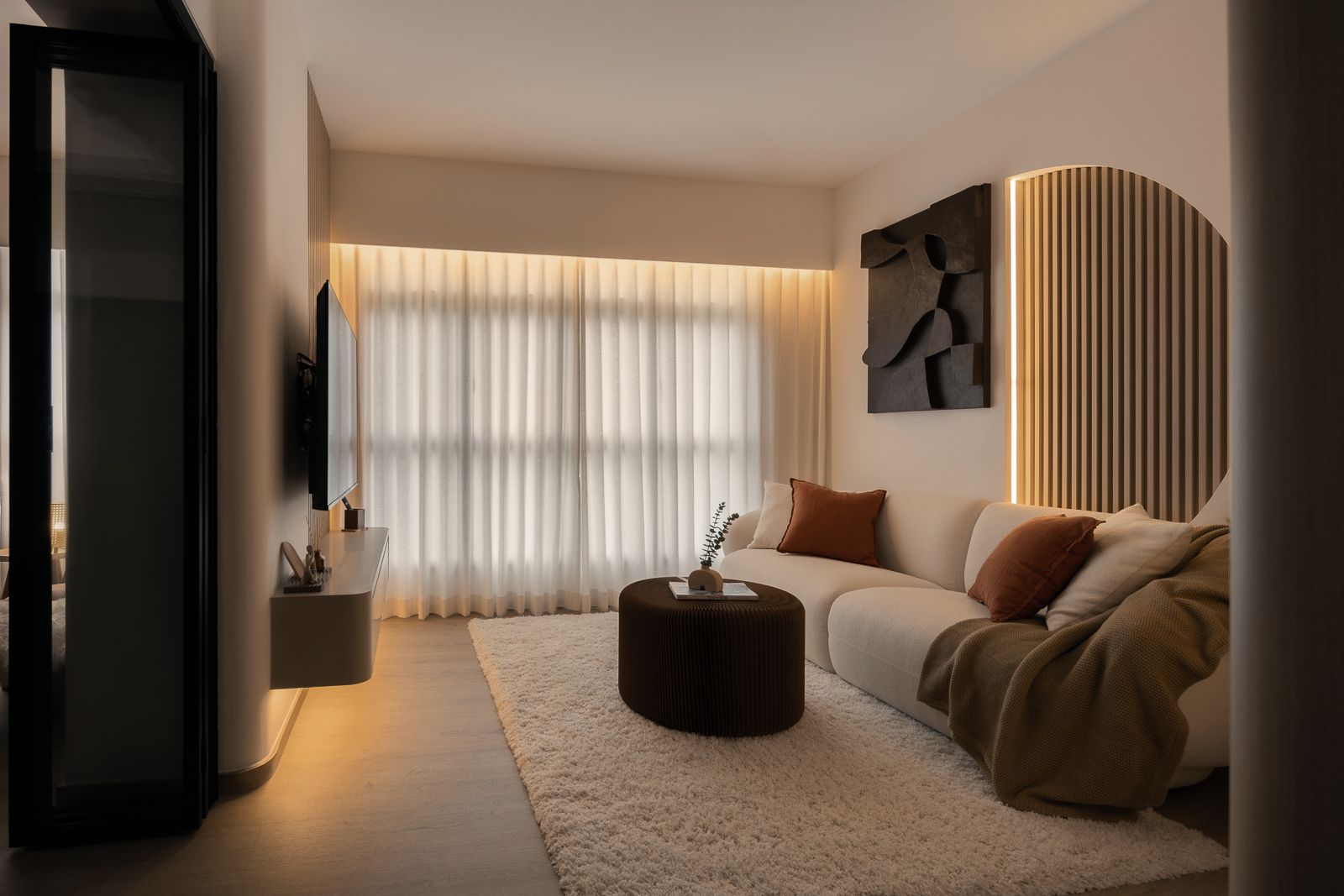
A harmonious blend of sustainability, technology, and personalisation characterises modern interior design in Singapore for 2025. Homeowners are increasingly seeking spaces that are not only aesthetically pleasing but also functional and reflective of their unique lifestyles.
To visualise these trends, consider the following design elements:
- Living Rooms: Incorporate warm-toned sofas with textured cushions, complemented by natural wood coffee tables and smart lighting systems.
- Kitchens: Opt for eco-friendly cabinetry, energy-efficient appliances, and countertops made from sustainable materials.
- Bedrooms: Use calming colours, natural fabrics, and incorporate plants to create a serene environment.
- Bathrooms: Install water-saving fixtures, use non-toxic materials, and add greenery to enhance the space.
Key Trends in Modern Singaporean Interior Design (2025)
- Sustainable and Eco-friendly Materials: There’s a growing emphasis on using materials that support both the environment and the well-being of the inhabitants. Designers are incorporating low-formaldehyde woods, low-VOC paints, and eco-certified finishes to improve indoor air quality, particularly important in Singapore’s humid, enclosed environments.
- Smart Home Integration: Technology continues to play a pivotal role in modern interiors. From bright lighting and air conditioning systems to voice-activated assistants and automated curtains, homes are becoming more intuitive and energy-efficient.
- Biophilic Design: Bringing the outdoors inside remains a strong trend. Designs incorporate indoor plants, green walls, natural light, and materials such as wood and rattan to create a stronger connection to nature, thereby boosting mental wellness.
- Textural Layers and Warm Tones: Warm, earthy colours such as terracotta, sand, and olive are prevalent, creating calming and cosy spaces. Textured surfaces, such as limewash, stucco, and cement, add depth and warmth, moving away from glossy finishes to embrace more tactile experiences.
- Personalisation and Customisation: Homeowners are increasingly seeking to personalise their spaces. Customisable furniture, modular designs, and adaptable decor allow individuals to create homes that reflect their unique tastes. Innovative technologies, such as 3D printing, are being used to craft one-of-a-kind pieces that cater to the homeowner’s exact needs and aesthetic.
6 Lighting Design Tips for Modern Homes in Singapore
Lighting plays a pivotal role in modern interior design, not just illuminating spaces but also enhancing aesthetics, functionality, and mood. Here are practical tips for Singapore homes:
1. Embrace Natural Light
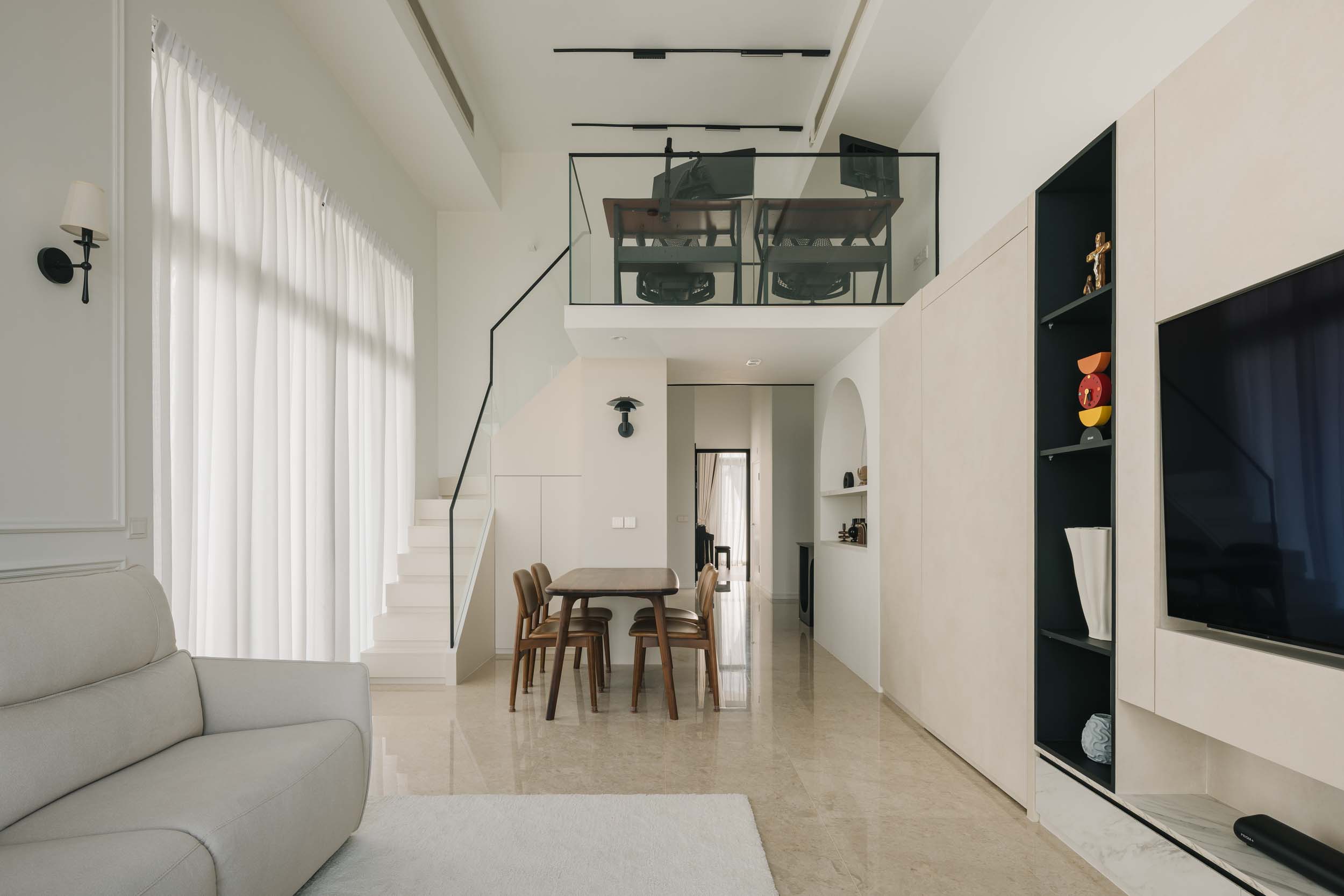
Natural light is a cornerstone of modern houses’ interior design, enhancing both aesthetics and functionality. When used effectively, it brightens spaces, creates a sense of openness, and elevates the overall mood of your home. For homeowners in Singapore, striking a balance between natural light and comfort is particularly important due to the country’s tropical climate.
Incorporating natural light into your home provides multiple benefits:
- Enhances aesthetics – Sunlight brings out the true colours and textures of your interiors.
- Improves mood and well-being – Natural light has a positive impact on energy levels, focus, and mental health.
- Creates spaciousness – Bright, sunlit rooms feel larger and more open.
- Reduces energy consumption – Decreases reliance on artificial lighting during the day.
Strategies to Maximise Natural Light
-
Strategic Window Placement and Skylights
-
-
- Large windows and glass doors flood rooms with daylight and strengthen the connection to outdoor spaces.
- Skylights – Ideal for interior or central areas that lack exterior walls.
- Orientation – East- and north-facing windows provide softer morning light, while west-facing windows may require shading to prevent overheating in Singapore.
-
-
Use Reflective Surfaces and Light Colours
-
-
- Mirrors – Positioned opposite windows to bounce light throughout the space.
- Light-coloured walls – Whites, creams, or soft pastels amplify brightness.
- Glossy finishes – Flooring, cabinets, or furniture with reflective surfaces enhance the effect of natural light.
-
-
Furniture Placement
-
-
- Avoid blocking windows – Keep large furniture away from window areas to allow light to flow freely.
- Open layouts – Encourage sunlight to reach deeper into rooms.
-
-
Innovative Solutions for Dim Spaces
-
- Light wells are vertical shafts that channel daylight into lower floors or interior rooms, typically suited for landed properties.
- Solar tubes capture sunlight from the roof and direct it into darker corners, but these are also generally applicable only for landed homes.
Natural light is a vital element in modern houses’ interior design, transforming interiors into bright, airy, and welcoming spaces. By combining strategic window placement, reflective surfaces, light-coloured finishes, and smart shading solutions, homeowners can achieve an ideal balance of illumination and comfort. Integrating innovative options such as skylights, light wells, and solar tubes can ensure that even interior areas are well-lit, enhancing both elegance and functionality, although these features are generally feasible only in landed properties in Singapore.
2. Layered Lighting for Depth
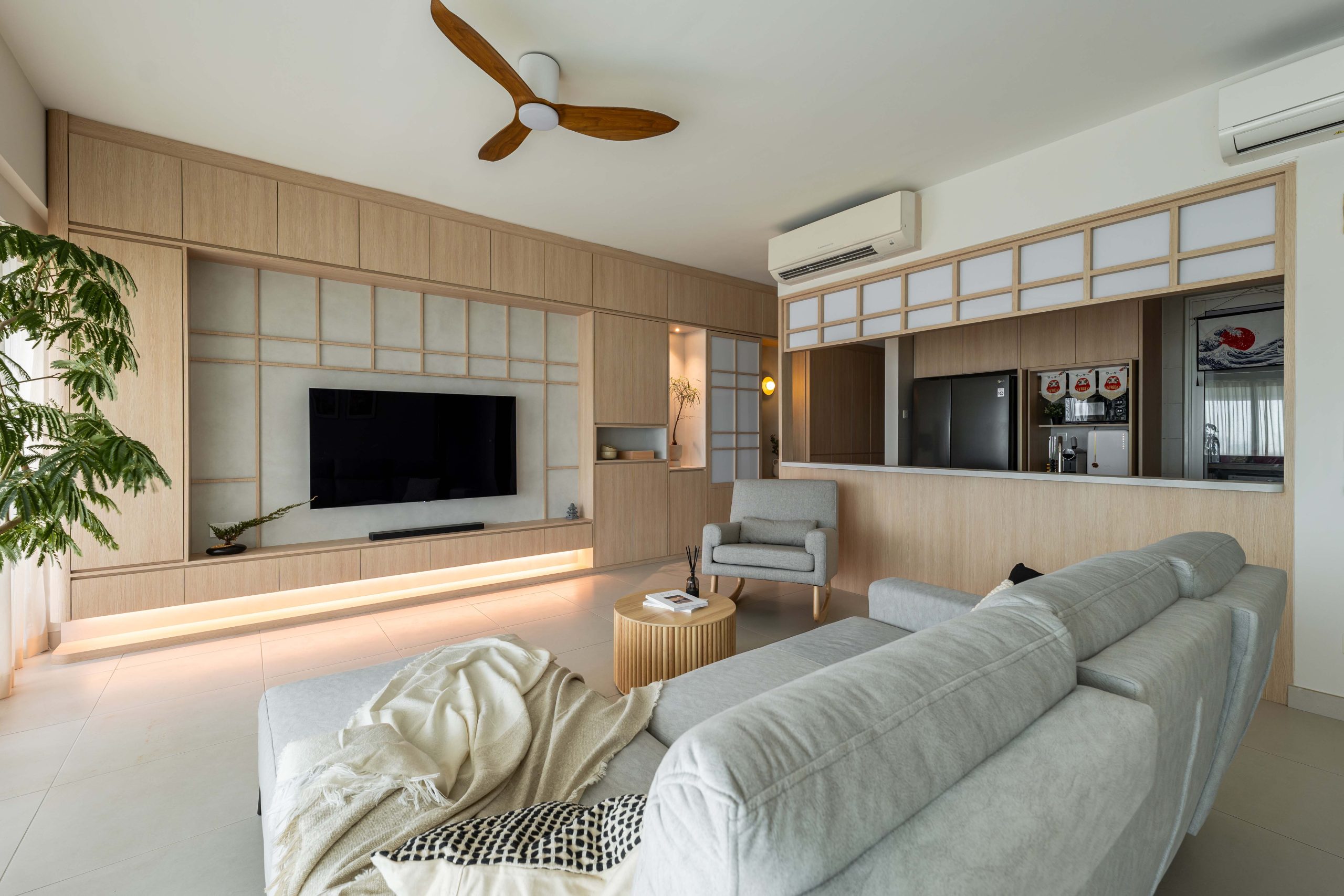
Lighting is a key component of modern houses’ interior design, not just for visibility but also for creating mood, highlighting features, and adding depth. Layering different types of lighting, including ambient, task, and accent, provides flexibility, enhances aesthetics, and ensures practical functionality throughout your home.
Types of Layered Lighting
- Ambient Lighting – The base layer that provides general illumination.
- Examples include Ceiling-Mounted lights, recessed lights, cove lighting, and wall sconces.
- Purpose: Sets the overall tone of the room, creating a warm and inviting atmosphere that is free from glare.
- Task Lighting – Focused lighting for areas requiring detailed or specific activities.
- Examples include Desk lamps, pendant lights over kitchen islands, under-cabinet lighting, and track lights.
- Purpose: Provides concentrated illumination for reading, cooking, working, or other focused tasks while adding functional style.
- Accent Lighting – Highlights architectural features, artwork, or focal points.
- Examples include LED strips, spotlights, chandeliers, or pin lights.
- Purpose: Draws attention to design elements, creating visual interest and enhancing the room’s dimension.
How Layered Lighting Enhances Modern Interior Design
Layered lighting adds depth, versatility, and elegance to interiors:
- Depth and dimension – Combining ambient, task, and accent lighting prevents flat or one-dimensional spaces.
- Mood versatility – Adjusting layers enables you to transition from a cosy and intimate atmosphere to a bright and energetic one.
- Practicality – Ensures sufficient illumination for tasks while avoiding harsh or uneven lighting.
- Highlight design elements – Accentuates architectural details, textures, and artwork, enhancing overall aesthetic appeal.
Examples of Layered Lighting Applications
|
Lighting Type |
Example Fixtures |
Ideal Use |
Benefit |
|
Ambient |
Ceiling lights, recessed lights, cove lighting |
Living rooms, bedrooms, hallways |
Creates uniform, soft illumination and sets the tone |
|
Task |
Desk lamps, pendant lights, under-cabinet lights, track lights |
Kitchens, study areas, reading nooks |
Provides focused light for activities and enhances functionality |
|
Accent |
LED strips, spotlights, chandeliers, pin lights |
Artwork, shelves, feature walls |
Highlights key design elements and adds visual interest |
Tips for Implementing Layered Lighting in Modern House Interior Design
- Combine layers strategically – Ensure ambient light is sufficient to illuminate the room while task and accent lights add flexibility.
- Use dimmers – Adjust the intensity of each layer to suit different activities or moods.
- Focus on functionality and aesthetics – Task lighting should be functional but stylish, complementing the overall interior design.
- Highlight architectural features – Accent lights can emphasise textures, niches, or statement walls for a luxurious feel.
Layered lighting is a crucial principle in modern home interiors, offering both practicality and aesthetic enhancement. By thoughtfully combining ambient, task, and accent lighting, homeowners can create spaces that are versatile, visually engaging, and comfortable. This approach ensures your interiors are well-lit for daily activities while highlighting the elegance and sophistication of modern luxury living.
3. Statement Lighting Fixtures
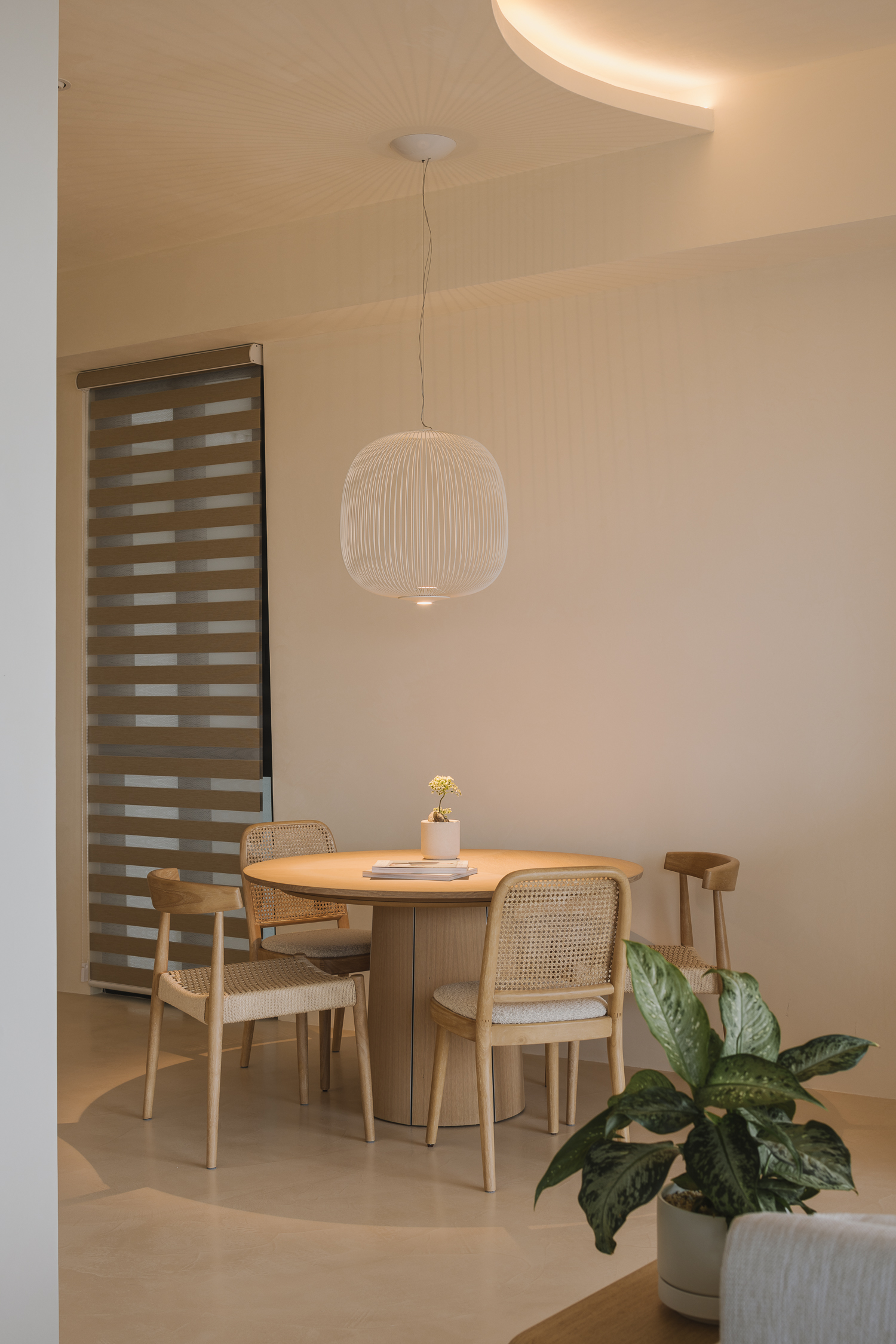
Statement lighting fixtures are a hallmark of modern houses’ interior design, creating focal points that combine function and artistry. These fixtures add personality, elegance, and a sense of luxury to your interiors, transforming ordinary spaces into visually striking environments.
In modern luxury homes, statement lighting serves multiple purposes:
- Visual focal points – Draw the eye and anchor the design of a room.
- Artistic expression – Combines lighting with sculptural or design elements.
- Enhanced ambience – Adds drama, warmth, and character to interiors.
- Functional illumination – Provides light while elevating the aesthetic appeal.
Types of Statement Lighting
- Chandeliers
- Positioned above dining tables, sofas, or in foyers.
- Example: A chandelier in a living room corner transforms a dull space into a luxurious focal point.
- Benefit: Adds elegance, height, and grandeur to the room.
- Hanging Pendant Lights
- Sleek drop pendants are popular in contemporary interiors.
- Example: Pendant lights over kitchen islands or lounge areas provide both task lighting and visual interest.
- Benefit: Enhances the modern aesthetic with clean lines and contemporary appeal.
- Designer or Artistic Lights
- Examples: Aslaug Marble Ring Wall Lamp, combining marble and metal for sophistication.
- Purpose: Serves as both a functional light source and a piece of art, adding modern flair and uniqueness to your home.
- Ceiling Lamps
- Ideal for entryways, living rooms, or dining spaces.
- Purpose: Provides ambient lighting while acting as a subtle statement piece.
Statement lighting fixtures are a key element in modern houses’ interior design, offering both artistic expression and practical illumination. Chandeliers, pendants, designer lamps, and ceiling fixtures serve as visual focal points that elevate the ambience, add personality, and bring modern luxury to life. By selecting proportionate, stylish, and well-placed lighting, homeowners can transform their interiors into sophisticated, visually engaging spaces that reflect both function and flair.
4. Functional Task Lighting
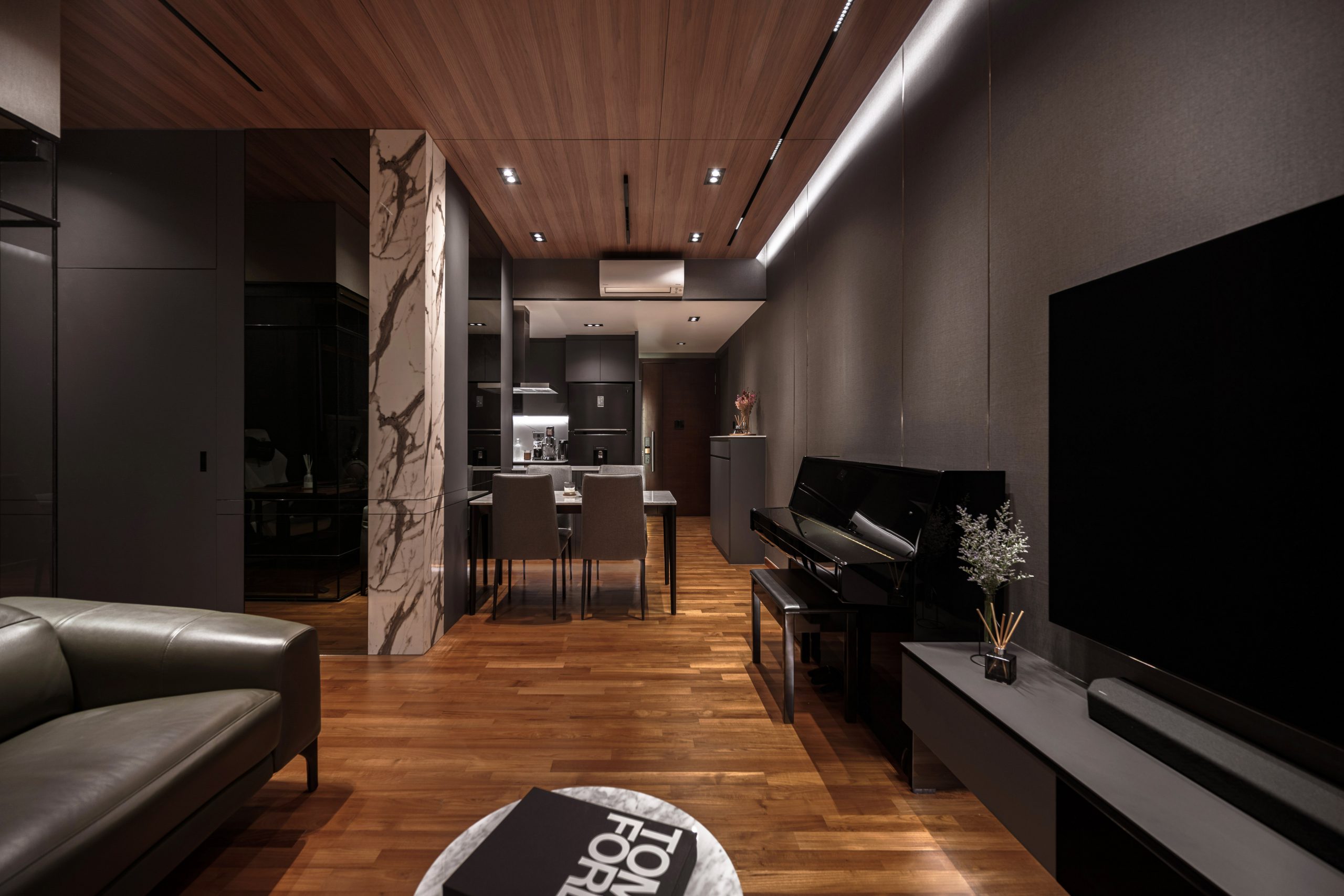
In modern house interior design, functional task lighting is essential for creating productive, practical, and comfortable spaces. Unlike ambient or accent lighting, task lighting is focused, directing illumination to specific areas where activities are performed. Proper task lighting not only enhances functionality but also supports well-being by mimicking natural daylight, improving concentration, mood, and overall productivity.
Task lighting offers several key benefits:
- Improves visibility – Provides sufficient illumination for activities such as cooking, reading, or working.
- Enhances productivity – Bright, focused lighting increases alertness and efficiency in home offices or study areas.
- Reduces eye strain – Properly directed light prevents glare and minimises visual fatigue.
- Supports design flexibility – Can complement other lighting layers to balance aesthetics and function.
Common Types of Task Lighting
- Track Lights
- Ideal for living rooms or multi-purpose spaces requiring adjustable light direction.
- Flexible design allows you to focus light on different areas as needed.
- LED Spotlight Packs
- Compact and efficient, suitable for highlighting specific work surfaces.
- Provides bright, focused illumination for detail-oriented tasks.
- Under-Cabinet Lighting
- Perfect for kitchens to illuminate countertops and food preparation areas.
- Enhances visibility while maintaining a clean, modern aesthetic.
- Recessed Lighting
- Seamlessly integrated into ceilings for offices or study rooms.
- Provides uniform task lighting without cluttering the space or causing glare.
Functional task lighting is a critical component in modern houses’ interior design, providing focused illumination for productivity, safety, and comfort. By carefully selecting and placing track lights, LED spotlights, under-cabinet lighting, and recessed fixtures, homeowners can create practical and efficient spaces without sacrificing style. Incorporating daylight-mimicking bulbs or cool-white light further enhances concentration and performance, making task lighting both functional and aesthetically pleasing.
5. Ambient Lighting for Atmosphere
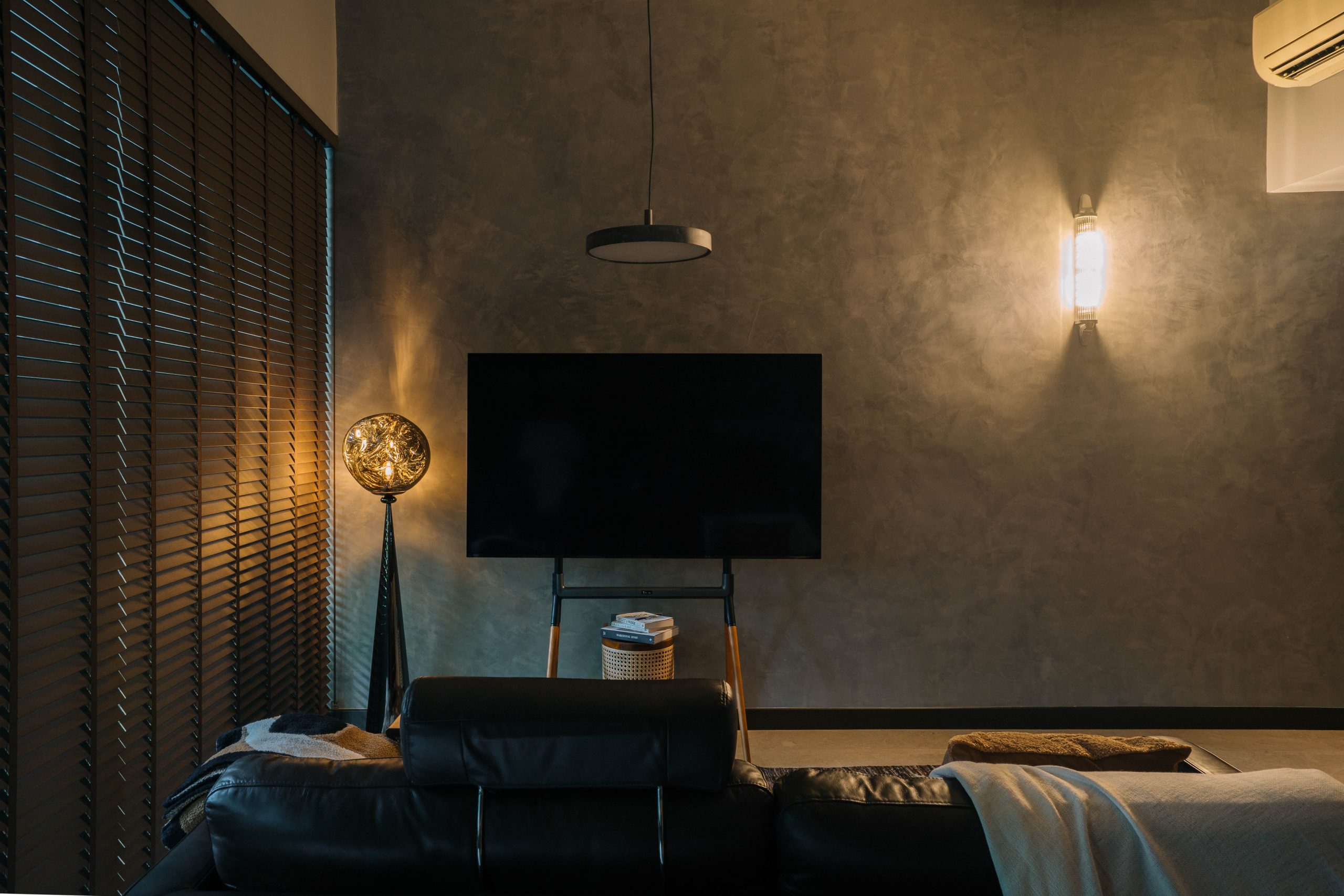
Ambient lighting is the foundation of modern houses’ interior design, providing general illumination that sets the overall mood and atmosphere of a space. Unlike task or accent lighting, ambient lighting is softer, more diffused, and designed to create a sense of comfort, warmth, and depth throughout a room.
Warm vs. Cool Lighting and Its Effect on Ambience
Lighting temperature significantly influences the feel of a room:
- Warm light (2700K–3000K)
-
-
- Creates a mellow, relaxing, and cosy atmosphere.
- Ideal for bedrooms, living rooms, and lounge areas where comfort is a priority.
-
- Cool light (4000K–5000K)
-
- Produces a bright, alert, and energetic environment.
- Ideal for kitchens, home offices, study areas, or workspaces that demand concentration and clarity.
Key Ambient Lighting Fixtures
- Picture lights, floor lamps, and wall lamps – Add warmth to large rooms and create a cosy, inviting environment.
- Cove or cornice lighting – Installed along ceilings to accentuate room dimensions and make spaces feel larger.
- Recessed lighting – Provides uniform ambient light and works well when layered with task or accent lighting.
- Dimmer switches – Allow homeowners to adjust light intensity to suit different moods, from vibrant daytime settings to soothing evening ambience.
Tips for Effective Ambient Lighting
- Combine multiple fixtures for layered illumination and visual interest.
- Adjust the lighting temperature according to the room’s function and the time of day.
- Use dimmers to create a flexible environment that can transition seamlessly from daytime activity to evening relaxation.
- Incorporate architectural features like coves, cornices, or recessed ceilings to enhance the soft glow and elegance of the space.
Ambient lighting is a cornerstone of modern houses’ interior design, providing comfort, warmth, and functional illumination while shaping the overall atmosphere of a home. By carefully choosing warm or cool lighting, layering multiple fixtures, and strategically placing lights, homeowners can create inviting, versatile, and visually dynamic spaces that elevate both aesthetics and functionality.
6. Highlighting Natural Elements
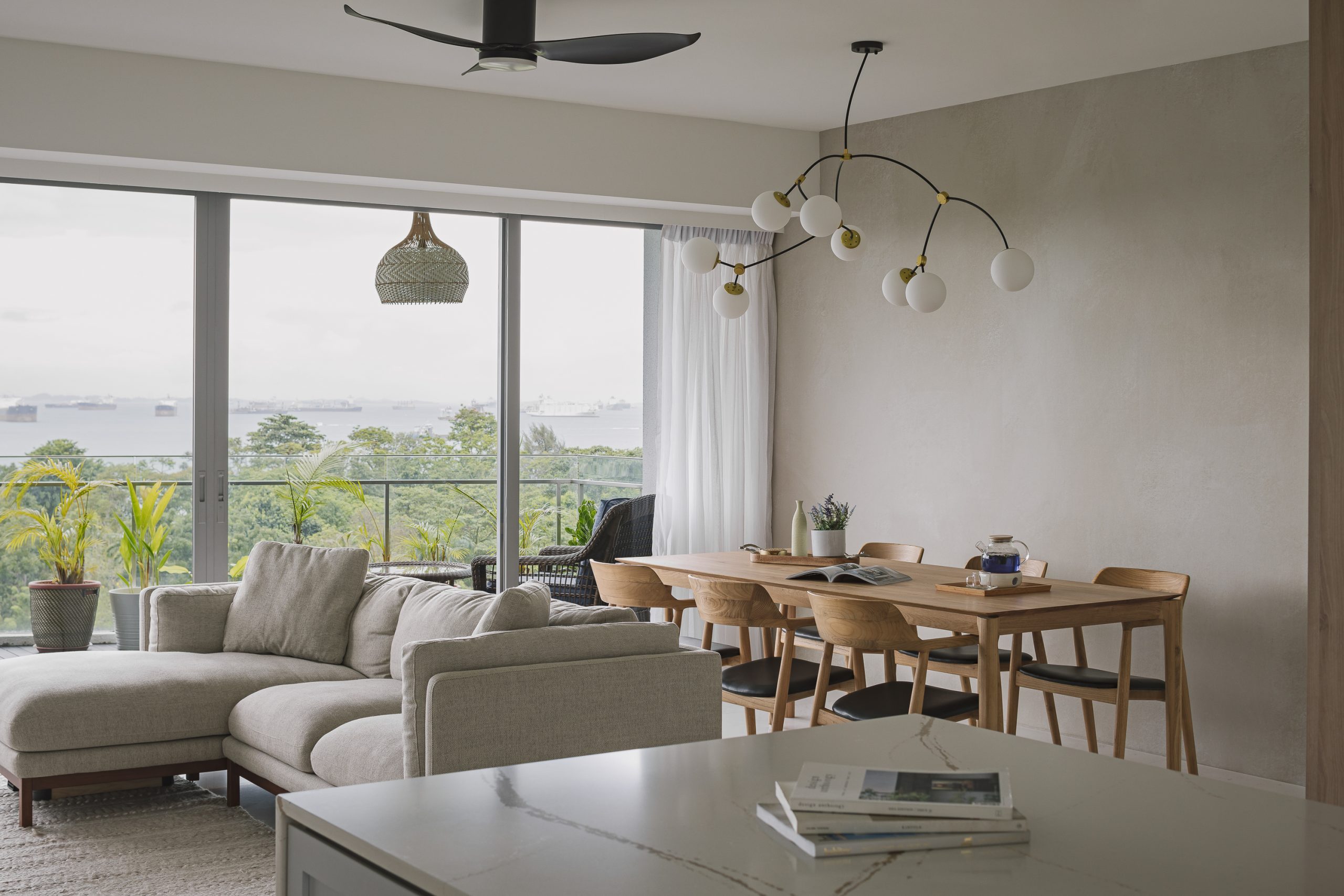
In modern house interior design, incorporating natural elements such as wood, stone, and marble brings warmth, texture, and sophistication to interiors. These materials not only enhance visual appeal but also create a timeless elegance that complements contemporary aesthetics. When combined with strategic lighting, natural elements become a focal point, adding depth, character, and luxury to your home.
Natural materials play a key role in modern interiors by:
- Adding warmth – Wood and stone prevent spaces from feeling cold or sterile.
- Creating texture and depth – Variations in grain, veining, and finish bring visual interest.
- Enhancing sophistication – Marble, natural stones, and high-quality wood convey a luxurious feel.
- Providing harmony – Integrating natural elements balances modern clean lines with organic beauty.
Lighting Techniques to Highlight Natural Materials
Proper lighting can elevate natural elements, showcasing their craftsmanship and beauty:
- Spotlights
- Example: A stone fireplace or feature wall illuminated with directional spotlights.
- Effect: Creates subtle shadows and highlights textures, adding drama and depth.
- Under-Cabinet Lighting
- Example: Kitchen cabinets or shelves illuminated with under-cabinet lighting to highlight textures and improve visibility.
- Effect: Emphasises surfaces and enhances the natural grain or finish of materials.
- Pendant Lighting
- Example: Marble countertops or islands illuminated with stylish pendant lights.
- Effect: Adds both functional light and visual focus on luxurious surfaces.
- Recessed Lighting
- Example: Use warm LED wall washers to highlight wooden accent walls or natural stone textures, enhancing depth and visual warmth.
- Effect: Provides a soft, even glow that complements modern luxury aesthetics.
Examples of Natural Elements Highlighted with Lighting
|
Natural Material |
Lighting Technique |
Ideal Application |
Design Benefit |
|
Wood |
Under-cabinet lights, recessed lights |
Accent walls, cabinets, shelves |
Highlights grain and texture, adds warmth |
|
Stone |
Spotlights, recessed ceiling lights |
Fireplaces, feature walls |
Creates dramatic focal points and depth |
|
Marble |
Pendant lights, recessed lighting |
Kitchen islands, countertops |
Enhances luxurious appearance and elegance |
|
Mixed Natural Elements |
Layered lighting (ambient + accent) |
Living rooms, dining areas |
Balances modern lines with organic warmth |
Tips for Highlighting Natural Elements in Modern House Interior Design
- Layer lighting – Combine ambient, task, and accent lighting to enhance textures without overpowering the space.
- Focus on key surfaces – Highlight feature walls, countertops, or decorative elements to create visual interest.
- Maintain balance – Avoid over-illumination; subtle lighting emphasises material beauty naturally.
- Complement with décor – Add minimalist furniture or soft textiles to enhance warmth and sophistication.
Highlighting natural elements is a vital strategy in modern house interior design, bringing elegance, warmth, and texture to contemporary interiors. By thoughtfully combining materials such as wood, stone, and marble with strategically placed lighting, homeowners can create harmonious, visually stunning spaces that reflect luxury and personal style. This approach transforms functional areas into sophisticated living environments where natural beauty and modern design coexist seamlessly.
Transform Your Modern Home with The Interior Lab, Experts in Modern House Interior Design
Bring your vision of a bright, stylish, and functional home to life with The Interior Lab, specialists in modern house interior design in Singapore. Their team of experts carefully plans and implements lighting solutions that enhance every room, creating a harmonious balance between aesthetics and practicality.
From smart lighting integration and energy-efficient designs to customised layouts that highlight your home’s best features, The Interior Lab ensures every detail is executed flawlessly. Partnering with them means gaining professional guidance, high-quality materials, and expert installation, transforming your living space into a modern, inviting sanctuary.
Contact The Interior Lab today and let their modern house’s interior design expertise illuminate and elevate your home.
Frequently Asked Questions
How can I maximise natural light in my home?
Maximising natural light begins with large windows, glass doors, and skylights to let sunlight in. Use reflective surfaces such as mirrors or glossy finishes to bounce light around the room. Keep furniture and bulky items away from windows to avoid blocking daylight. For darker areas, consider light wells, glass partitions, or strategically placed lamps to enhance brightness. Properly maximising natural light makes your space feel larger, warmer, and more inviting.
What is layered lighting, and why is it important?
Layered lighting combines ambient, task, and accent lighting to add depth, style, and functionality to a space. Ambient lighting provides overall illumination, task lighting focuses on specific activities, such as reading or cooking, and accent lighting highlights décor or architectural features. Layered lighting is essential because it allows you to control mood, emphasise key areas, and enhance both functionality and aesthetics in your home.
What are some examples of statement lighting fixtures?
Statement lighting fixtures serve as focal points in a room, elevating the interior design. Popular examples include grand chandeliers, hanging pendant lights, sculptural ceiling lamps, and unique floor or table lamps. These fixtures are ideal for spaces such as the foyer, dining room, or living area, where they can draw attention and showcase your unique design style.
How does task lighting enhance productivity?
Task lighting provides focused, bright illumination for activities such as reading, cooking, or working. By mimicking natural daylight, it enhances alertness, improves mood, and reduces eye strain, making it ideal for offices, kitchens, and study areas. Properly designed task lighting allows you to perform tasks efficiently while maintaining comfort and focus.
How can I create a cosy atmosphere with ambient lighting?
Ambient lighting sets the overall mood in a space and can make it feel warm, inviting, and cosy. Combine floor lamps, wall sconces, and picture lights to create a soft, layered glow. Adding dimmer switches allows you to adjust brightness according to the time of day or activity. By blending various lighting types, you can create a cosy and welcoming atmosphere that enhances comfort and relaxation.
CONSULT OUR DESIGNER
-
16 December 2025 DESIGN INSPIRATIONPRE-RENOVATIONTIPS & GUIDES
Low-Maintenance Interior Design Ideas For Busy Singaporeans
-
4 December 2025 TIPS & GUIDES
HDB Interior Design Rules You Might Be Breaking Without Knowing (And How to Fix Them)
-
4 December 2025 TIPS & GUIDES
Selecting an Interior Designer for Luxury Interior Design
-
4 December 2025 TIPS & GUIDES
6 Essential Functional Considerations in Renovation Interior Design You Don’t Want to Overlook
-
4 December 2025 TIPS & GUIDES
Top 10 Ways to Personalise a Templated Condo Interior Design
-
11 November 2025 TIPS & GUIDES
Future-Proofing Your Home: Designing for the Years Ahead

